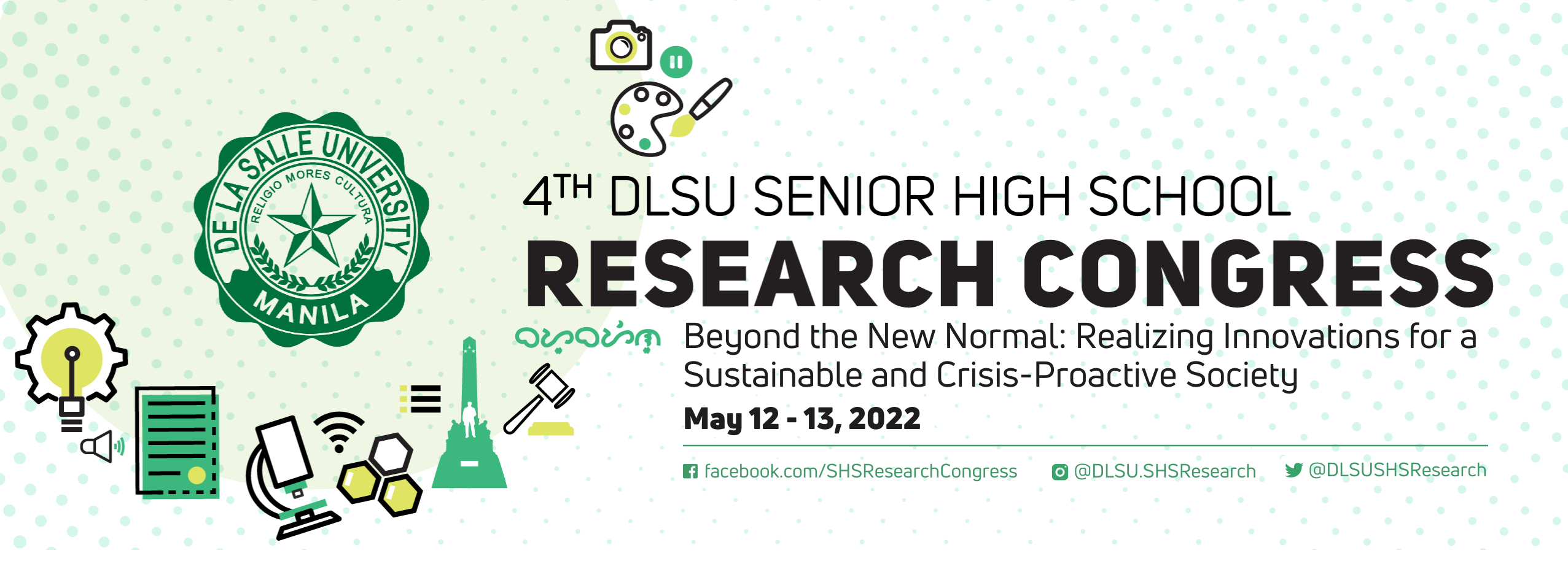Document Types
Paper Presentation
Research Advisor (Last Name, First Name, Middle Initial)
Wilfred Luis L. Clamor
Start Date
12-5-2022 1:00 PM
End Date
12-5-2022 3:00 PM
Abstract/Executive Summary
As society continually progresses in the 21st century, there is evident advancement in the utilization of digital devices and the internet. With this, digital inclusion, or an individual’s ability to use and access information and communications technology (ICT), is particularly relevant in the present day. Furthermore, the COVID-19 pandemic has only exacerbated the need for adequate digital inclusion levels among students. This paper describes the relationship between the digital inclusion levels and the academic performance of senior high school students during the pandemic, and determines the sociodemographic and socioeconomic characteristics that influence both digital inclusion and academic performance. Using a sample of 203 senior high school students residing in Metro Manila, data was collected by means of an online survey questionnaire utilizing a 5-point Likert scale conducted through Google Forms. The data obtained were viewed and analyzed through a descriptive-quantitative research approach, mainly utilizing inferential statistics, to exhaust and determine the correlation between the primary variables of the study. The findings indicate that there is a significant relationship between digital inclusion levels and academic performance with all three digital inclusion levels expressing significant correlations. Moreover, data present that digital access has the largest effect on the academic performance of the students during the pandemic. Overall, the study suggests that the sociodemographic characteristics, socioeconomic characteristics, and digital inclusion levels all significantly contribute to the academic performance of Metro Manila senior high school students amid the COVID-19 pandemic.
Keywords
digital inclusion; academic performance; sociodemographic; socioeconomic; COVID-19 pandemic
Research Theme (for Paper Presentation and Poster Presentation submissions only)
Living Culture and Contemporary Societies (LCS)
Included in
#NoStudentsLeftBehind: The Role of Digital Inclusion in the Academic Performance of Senior High School Students Amid the Pandemic
As society continually progresses in the 21st century, there is evident advancement in the utilization of digital devices and the internet. With this, digital inclusion, or an individual’s ability to use and access information and communications technology (ICT), is particularly relevant in the present day. Furthermore, the COVID-19 pandemic has only exacerbated the need for adequate digital inclusion levels among students. This paper describes the relationship between the digital inclusion levels and the academic performance of senior high school students during the pandemic, and determines the sociodemographic and socioeconomic characteristics that influence both digital inclusion and academic performance. Using a sample of 203 senior high school students residing in Metro Manila, data was collected by means of an online survey questionnaire utilizing a 5-point Likert scale conducted through Google Forms. The data obtained were viewed and analyzed through a descriptive-quantitative research approach, mainly utilizing inferential statistics, to exhaust and determine the correlation between the primary variables of the study. The findings indicate that there is a significant relationship between digital inclusion levels and academic performance with all three digital inclusion levels expressing significant correlations. Moreover, data present that digital access has the largest effect on the academic performance of the students during the pandemic. Overall, the study suggests that the sociodemographic characteristics, socioeconomic characteristics, and digital inclusion levels all significantly contribute to the academic performance of Metro Manila senior high school students amid the COVID-19 pandemic.


